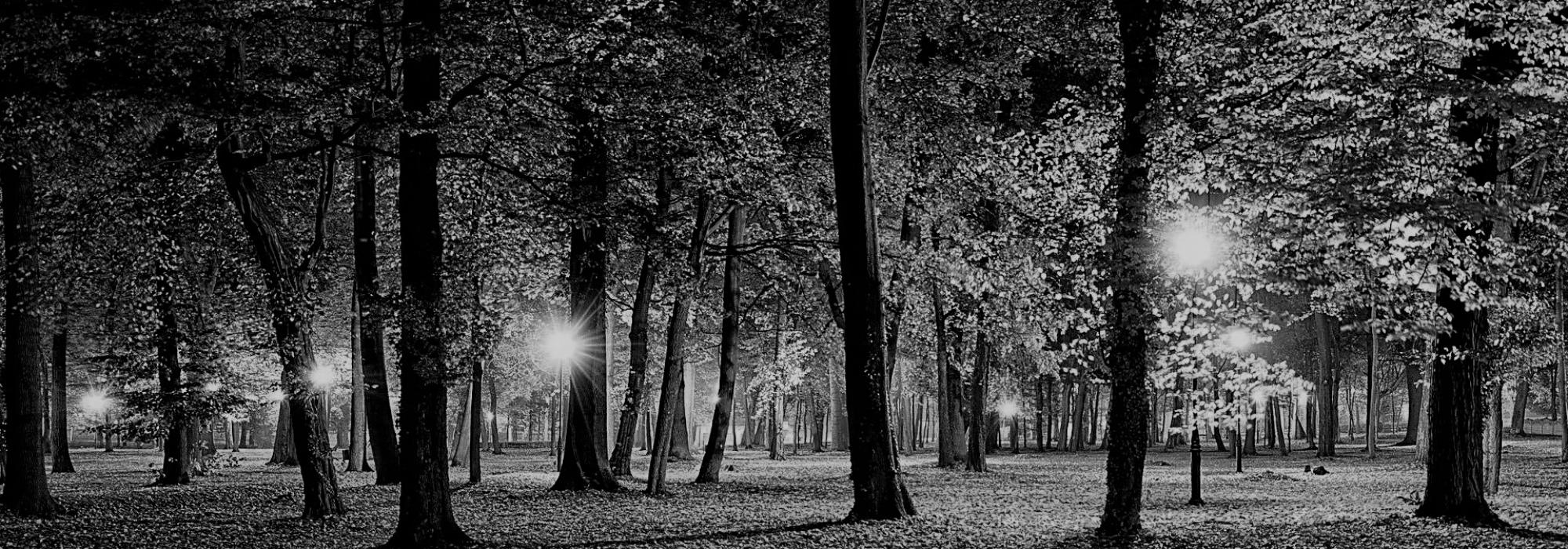Those who follow the āsurī form of prakṛti delude and waste themselves.
moghāśā moghakarmāṇo moghajñānā vicetasaḥ
BG9.12
The rākṣasas are cruel and unscrupulous. For them, their bodies are their self and bodily pleasures are the greatest happiness. Naraka and repeated births in lowly creatures are their fate.
Bhagavān expounds upon this dual nature of prakṛti later in the sixteenth chapter.
How can man be liberated if he is being pulled hither and thither by prakṛti? Svāmī now instructs us about how blessed the devotees are. He is for everyone -
gatirbhartā prabhuḥ sākṣī nivāsaḥ śaraṇaṁ suhṛt |
prabhavaḥ pralayaḥ sthānaṁ nidhānaṁ bījamavyayam ||BG 9.18
“Brahma is the way, the nourisher, the residence, the refuge, the friend, the origin, the dissolution, the sustainer, the final destination, and the indestructible seed of all existence.”
By performing vaidika activities such as yajñas, those worshipping Bhagavān reach svarga and other worlds, and after experiencing pleasures there -
kṣīṇe puṇye martyalokaṃ viśanti ॥
BG 9.21
(Once puṇya is spent, they return to the world of men)
Thus the fruit of puṇya is bound to end someday.
evaṁ trayīdharmam-anuprapannā
gatāgataṁ kāmakāmā labhante ||BG 9.21
(Those following the dharma of the three Vedas and are desirous of multiple desires attain the cycle of birth and death)
The same was indicated in 2.45 - traiguṇyaviṣayā vedā nistraiguṇyo bhavārjuna (Vedas deal with the three guṇas. O Arjuna, go beyond the guṇa-triad!). Whether Arjuna was able to achieve freedom from the guṇa-triad or not, it seems impossible for us. My submission is for us not to be indifferent to the good acts within the perimeter of the three guṇas. Bhagavān shows us that there is a way out even for weak and afflicted beings like us.
ananyāścintayanto māṁ ye janāḥ paryupāsate |
teṣāṁ nityābhiyuktānāṁ yogakṣemaṁ vahāmyaham ||BG 9.22
“I (Bhagavān) am responsible for the yogakṣema (welfare) of those who worship me without thinking of anyone or anything else and are always absorbed in me.”
Yoga is the attainment of the desired welfare. Kṣema is pleasure resulting from welfare - a happiness with contentment and no agitation. That indeed is relaxation. Are not all of our huffs and puffs for profit and enjoyment? But Svāmī says - “Leave all those burdensome thoughts of your welfare, wealth, and pleasure to me. I will take care of them”. What else can be a bigger assurance?
ye'pyanyadevatābhaktā yajante śraddhayānvitāḥ |
te'pi māmeva kaunteya yajantyavidhipūrvakam ||BG 9.23
The words of the Dāsa-saints of Karnataka - “hariya karuṇadoḻāda bhāgyava hari samarpaṇe māḍi badukiro” (Surrender unto Hari all that fortune that came to us from Hari’s compassion), “anudinadali baha sukha-duḥkha ninnadayya” (Those everyday pleasures and pains are yours!), and “kereya nīranu kerege celli varava paḍedavaraṃte kāṇiro” (Pour the water of the pond into the pond, and consider yourself blessed) - all convey the same emotion.
Surrendering everything is the hallmark of Saṃnyāsa (renunciation); it is giving up what one considers one’s own to Bhagavān.
śubhāśubhaphalairevaṁ mokṣyase karmabandhanaiḥ |
BG 9.28
(You will thus be liberated from the auspicious and inauspicious fruits and all fetters of karma).
Bhagavān takes no sides; he neither hates anyone nor does he long for anyone. He is the same for everyone. He gives in to Bhakti.
ye bhajanti tu māṁ bhaktyā mayi te teṣu cāpyaham |
BG 9.29
“I am in him who is devoted to me”.
There is no delay after Bhakti for divine grace to follow - just as there is no gap between one’s standing in front of a mirror and the appearance of one’s reflection in it. Just after breathing out is breathing in. If the Bhakta takes refuge in Bhagavān, Bhagavān too responds immediately to the Bhakta.
api cetsudurācāro bhajate māmananyabhāk |
sādhureva sa mantavyaḥ samyagvyavasito hi saḥ ||BG 9.30
Improper or immoral deeds might have been performed. There could have been a bad motive. It could have been a bad circumstance. Whatever it may be, once single-minded devotion to Bhagavān is established, he will set everything right. A person who resolves thus is a sādhu (virtuous).
What is the distance between earth and Vaikuṇṭha (Bhagavān’s supreme abode)? The Dāsa-saints answer that it is just one palm-length! It is bhakti that takes us through the journey of the palm-length!
kṣipraṁ bhavati dharmātmā śaśvacchāntiṁ nigacchati |
kaunteya pratijānīhi na me bhaktaḥ praṇaśyati ||BG 9.31
“Whatever might have happened in the past, pāpa is destroyed once bhakti arises. That person becomes a votary of dharma and gets permanent repose. Arjuna, this is my vow. My devotee will never come to harm!”
māṁ hi pārtha vyapāśritya ye'pi syuḥ pāpayonayaḥ |
striyo vaiśyāstathā śūdrāste'pi yānti parāṁ gatim ||BG 9.32
(Even those born of sinful origins such as women, vaiśyās and śūdras will attain the Supreme Goal by taking refuge in me.)
A controversy might arise here. Are women, vaiśyās and śūdras considered to be of sinful origin? Bhagavān has already said “samo'ham” (I am equal everywhere). By using the word “api” (also), why is he showing step-motherly treatment towards women, vaiśyās and śūdras? Is this not taking sides? Is this not discrimination?
We have pondered over this nitty-gritty aspect of dharma in the past chapter. The practice of internal equality finds fulfillment only in the external practice of hierarchy. Equal love towards all, and circumstantial awareness is the operative principle here. Let\ us look at it from this perspective.
The practice of bhakti and śraddhā come to a brāhmaṇa through his lineage as well as societal influence. Bodily penance and mental concentration are easier for him than for the others. Therefore, the path of divine contemplation might not be that hard for him.
Similar is the case for a Kṣatriya. If the Brāhmaṇa’s penance is through the practice of knowledge, a Kṣatriya’s penance is through practice of weaponry and physical exercise. Bhakti and focus may not be difficult for him due to the refinement of the body and mind.
A woman, however, because of her body’s natural structure, has a few physical limitations and differences in mental perspective. Her menstrual and postpartum conditions impede her physical practice of tapas and agitate her mind. More importantly, prakṛti fills a woman’s heart more with motherly love and affection than a man’s heart. This is prakṛti's strategy for sustaining the world. Whatever might be the father’s disposition, is it not the mother’s love that ensures a child its future? However a husband is, it is only the love and commitment of the lady of the house that makes a family. Thus, the female heart is the first instrument of prakṛti’s duty of protecting the world. This indeed is the strength of the feminine. There is however, an associated side-effect - non-concentration of the mind. The top of a coconut palm is single-pointed, whereas a mango tree has many ends owing to its many branches. A woman needs her husband, her children as well as Īśvara. She cannot give up on anyone. She needs Īśvara for her husband and children. Thus one-pointed devotion is harder for a woman than for a man. Even so, if she is devoted even for a moment, the same benefits that accrue to others accrue to her as well. This is the significance of ‘api’ - that there is a path even for those who are incapable of intense devotion and penance.
One-pointed concentration is hard even for vaiśyas (businesspeople). A vaiśya needs to maintain his business with hundreds of individuals to successfully run his business to make a profit. The thought of profit and loss in business cleaves his mind into two. His worldly associations are complex. He has to give a part of his devotion to the world. Difficult are his circumstances. In spite of all that, if he takes refuge in Bhagavān even momentarily, divine grace visits him as well. This too is signified by ‘api’.
After these two explanations, we see that not much else needs to be said in relation to the śūdras. A person known as a śūdra (by definition) lacks in knowledge and the company of the refined. He is not invested with much responsibility and only needs to do what is asked of him. Where is the time or the requisite tranquillity for Bhagavān’s worship for one who is constantly engaged in the service of other people? But in the middle of all his duties, if he takes refuge in Īśvara for even a brief period of time, he too gets to partake of Bhagavān’s munificence. Even here, the words “te api” (they too) are not meant to reject a śūdra for his inferiority but to denote compassion for the effort he undertakes.
Svāmī has taught us that he will look after the welfare of those who are constantly engaged in divine contemplation. Whatever the method of worship, or whoever the worshipped might be, all adorations performed with śraddhā reach Īśvara who is the one controller of the Universe. This instruction applies to everyone - be they wise or wealthy or strong or even world-weary or unlettered. Bhagavān is easily accessible to all. This is a life-maxim for us.
manmanā bhava madbhakto madyājī māṁ namaskuru |
māmevaiṣyasi yuktvaivamātmānaṁ matparāyaṇaḥ ||BG 9.34
Repose your mind in me, be my devotee, worship me, bow to me.
Engaged thus in me constantly, you will reach me alone.
“Arjuna, only the physical world is visible to your eyes. But circumstances agitate you. Observe with your inner-eye. You will see Infinite Consciousness behind the world and as its basis. Surrender to that Supreme Being. You might feel that It is far away from you now. Turn towards It, believe in It, prostrate to It and proceed in Its path. You will reach Its abode. Dhārmic life is nothing other than life turned towards the divine; that indeed is a blessed life. This is the essence of the Gītā.
svānaṃd-āmṛta-bhojanak-ā
nanam-oṃdeṃtu sālgumeṃdu brahmam ।
nānāmukhitvamaṃ saṃ-
dhānisal-āytella viśvam-agaṇitarūpaṃ ॥Brahma, realising that one mouth
is not enough to savour the ambrosial feast of self-bliss,
contemplated upon myriad faces and
the universe assumed uncountable forms.
Summary
pūrṇadoḻ-ihuv-aṃśaṃgaḻ
pūrṇam-adeṃtirkum-aṃśa-mitiyoḻ-anaṃtam
arṇavadoḻ-ihavu biṃduga-
ḻarṇavam-eṃtoṃdu biṃdu-mitiyoḻagirkum ॥
The Full has parts,
How can the Full be Infinite with its parts being finite?
The sea has droplets;
How can the sea exist within a drop’s limit?
aṇuvihuv-enito mahattino-
ḻaṇuvoḻag-eṃt-aḍagalappudu mahadbhūtam
tṛṇa beḻevudu bhūtaladoḻ
tṛṇadoḻagavitihude bhūmigolamaśeṣam ॥
Atoms innumerable exist in mahat, the great principle.
How can that great principle hide in these atoms?
Grass grows on the earth.
Is the geo-globe hidden entirely in the grass?
bahuvidha-vastuvikāram
nihitaṃgaḻ brahmakośadoḻ prakṛti-kṛtam ।
tuhina-hima-phena-budbuda
mihuvaṃbudhiyoḻadu mithyeyaciramasāram ॥
Many modifications of myriad objects
That exist in Brahma are creations of prakṛti.
Snow, white foam and bubbles exist in the ocean.
They (modifications and sea-bubbles) are unreal, transient,
and are devoid of lasting worth.
jagamirkuṃ brahmadoḻā
jagadoḻag-eṃtaḍagalahud-akhaṃḍaṃ brahmam
jagadadriya-nervātaṃ
nagaśikharaṃ brahma-pādameṃdire dhanyam ॥
If the world exists in Brahma,
How could that undivided Brahma hide in the world?
When the one climbing the world-hill
says that its peak is the foot of Brahma,
he is indeed blessed.
sthira-cara-lokaṃ-gaḻgī-
śvaran-āśrayan-eṃbudaṃ tadaspṛṣṭateyam ।
śaraṇāgata-vātsalyama-
noredaṃ hari naranigaduve navamādhyāyam ॥
That Īśvara is the basis of the world
with its animate and inanimate objects,
Īśvara’s detachment, and his affection for
those to surrender to him,
were taught to Nara by Hari in the ninth chapter.
manuṣyasvabhāvajñanātaṃ manojñaṃ
sadā jīvasāhāyyaśīlaṃ salīlaṃ ।
janaucitya-bhed-ānu-sāropakāraṃ
narādarśabhāvaṃ paraṃ kṛṣṇadaivaṃ ॥
He is the knower of human disposition; charming.
Jīva’s companion forever; effortless in his actions,
Helper of people according to their individual traits.
Model of human conduct; the Supreme; Bhagavān Śrī Kṛṣṇa.
The present series is a modern English translation of DVG’s Kendra Sahitya Akademi Award-winning work, Bhagavad-gītā-tātparya or Jīvana-dharma-yoga. The translators wish to express their thanks to Śatāvadhāni R Ganesh for his valuable feedback and to Hari Ravikumar for his astute edits.















































